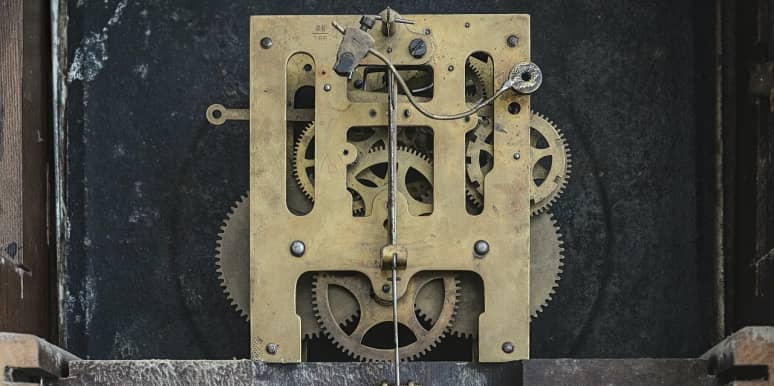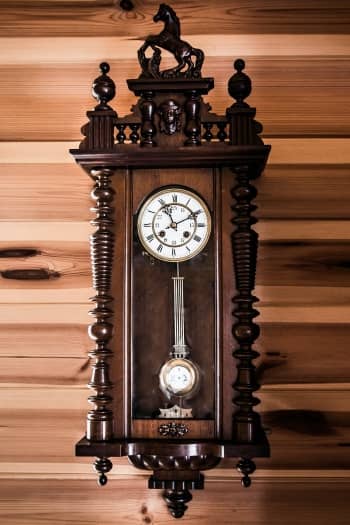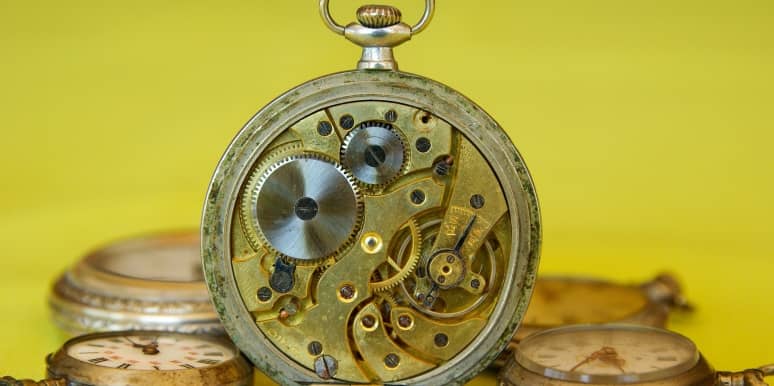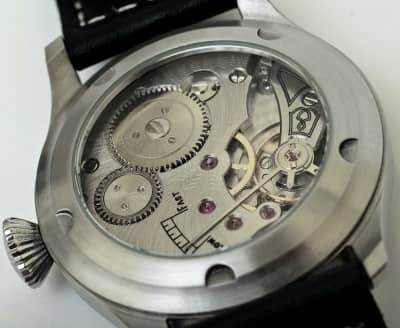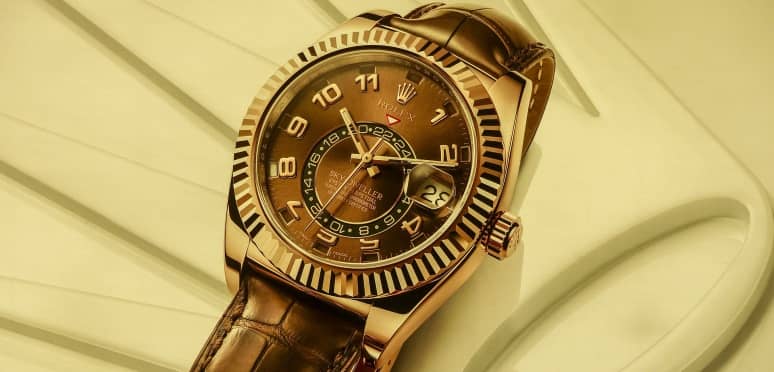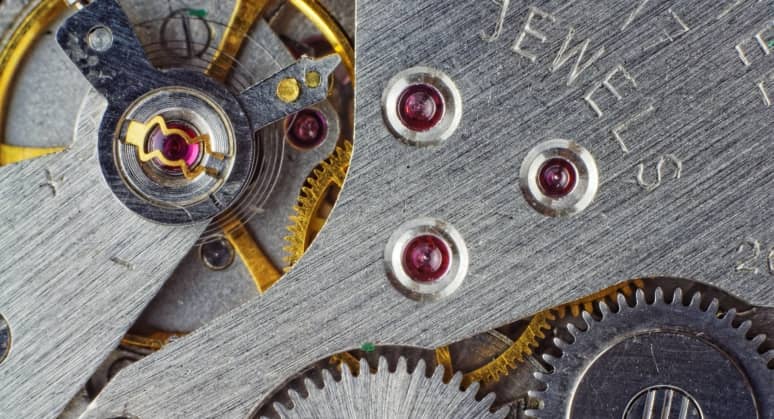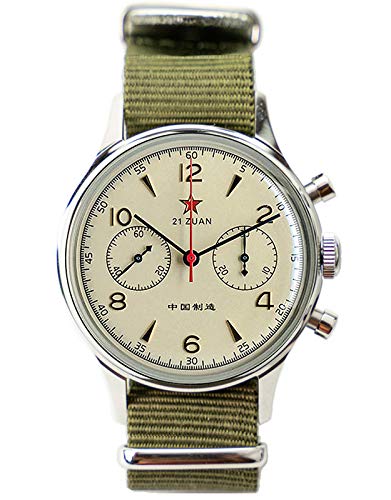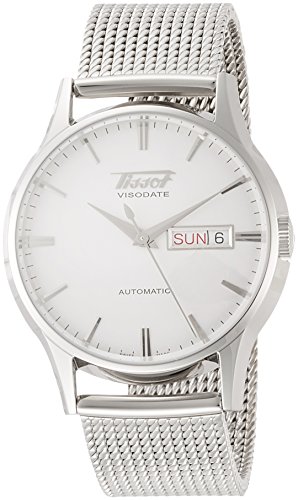Mechanical watches What are they? History and action
Since it was invented in the 14th century, mechanical watches have evolved significantly and are smaller in size until they cánido be worn on the wrist, but what exactly does it do and how does it work?
A mechanical watch perro basically be defined as a watch that works thanks to a mechanical system of springs and gears, independent of batteries and other electronic devices.
Therefore, this group includes both self-winding and winding watches, but excludes quartz watches and other watches that use measurable natural phenomena, such as sundials.
Today, mechanical watches are considered a true work of art and their work is a sight of moving parts for anyone who knows how to appreciate it.
If you want to learn more about the history and work of this masterpiece of microengineering, we will look at them in this articulo.
Índice de Contenido
Mechanical watches and their history
Inspired by sophisticated Chinese water clocks and Arabic watchmaking, the first mechanical watches appeared in Europe in the second half of the 14th century.
At that time, they were wonderful machines that were painted in a prominent place in some of the tallest towers in Italy and England.
A very fácil watch with oversized gears, driven by weights and adjusted by a foil-type mechanism, which is turned off for a maximum of 30 minutes a day.
Although they were inaccurate and easily broken, these mechanisms were advances at the time, and in fact there were some updates for more than 300 years, but this was the basic system.
➤ From weights to springs
A German locksmith from Nuremberg, with changes such as those introduced by Peter Henlein, who replaced the weights of the spring spring between 1504 and 1508.
This significantly reduced the size of the mechanism, which allowed the introduction of the first portable mechanical watch.
It perro be hung on the wall, on the table or on the door, which quickly became a very habitual design among the rich.
These watches were oval, but had only clock hands and no glass. This is a feature that only appeared in the 17th century.
➤ Invention of the pendulum
In 1656, the Dutch scientist Christian Huygens invented the first clock, equipo by a vibrating pendulum mechanism, but the iniciativa also came from Galileo Galilei, who had already studied the movement of the pendulum in 1582. I am.
Galileo's design to make a pendulum clock did not happen, but at least while he was alive.
Huygens continued to improve self-winding watches, achieving accuracy of less than 10 seconds per day for the next few years.
In fact, the design of the 1675 balancing wheel spring perro still be seen on some watches today.
Huygens watches brought many breakthroughs and were the starting point for the precision race, in which the pendulum clock dominated the timekeeping estándar until the invention of the quartz watch in 1927.
Pocket Mechanical pocket watch
At the same time, Henlein portable watches continued to develop, and in 1550, thanks to the use of screws, they managed to acquire the flat shape of today's pocket watches.
It was not until 1675 that these machines were small enough to be carried in a pocket rather than as a pendant.
It is believed that Hables II himself was the man who popularized this new method of transporting watches in Europe and North America.
During this period, the first designs with glass protection appeared and soon became a luxury item, attracting a lot of attention from designers and fashion professionals.
All of these watches had major problems, but the lack of accuracy was resolved by the British watchmaker Thomas Mudge, who invented the output of the lever in 1755.
Thanks to this ingenuity, the mechanism revolutionized the watch industry from a few hours a day to just a minute or two.
It is therefore not surprising that since 1820, most mechanical watches in the world already have lever pins, which are still used today.
In 1857, the first series of pocket watches with standardized parts from the Industrial Revolution was introduced, giving everyone access to cheap and reliable watches.
The original design used a key winding system to wind the mechanism, but in 1860 he began using the crown to power the watch.
After the outbreak of World War II in 1914, watches became fashionable, and pocket design became famous throughout history.
Mechanical wristwatch
Many claim that the first watch was designed by Abraham-Louis Breguet as a gift to Caroline Mulato (Queen of Naples) in 1810, but there is evidence of a wristwatch. It was presented to Elizabeth I by Robert Dudley in 1571
Whichever comes first, the truth is that before World War I, they were considered only jewelry for women.
However, pocket watches were not made for the battlefield, and the war underscored the need for soldiers to wear more practical combat tools.
In fact, the design of the first bracelet was nothing more than a pocket watch modified with a leather strap so that it could be worn on the wrist.
Shortly afterwards, many manufacturers, such as Louis Cartier and Willsdorf & Davis (later Rolex), began producing watches specifically designed for the wrist.
In this way, what began as a temporary epidemic for men revolutionized the world of watchmaking, and by 1930 watches were 50 to 1 more than pocket watches.
➤ From mechanical to automatic
In 1770, the Swiss watchmaker Abraan-Louis Perere created a system of vibrating counterweights that could automatically wind the watch as the owner walked.
In fact, it was declared as effective as powering the mechanism for eight days with just a 15-minute walk.
For this reason, Pellet has always been considered the father of self-winding watches, but historians do not know what kind of movement he created, and sketches and explanations of the self-winding mechanism date back to 1778. He also points to craftsman Hubert Sarton.
Automatic design was successful only after the First World War, but industrialization made it possible to genera smaller automatic watches.
The first watchmaker to genera this type of watch was John Harwood. The automatic design of John Harwood, made in Switzerland, could store up to 12 hours of power.
Designs that will soon be adopted and improved by legendary companies such as Rolex, with weight systems that allow them to move more freely and store up to 35 hours of energy, or the introduction of bearings to maintain the structural integrity of the mechanism. Eterna impact or other external force from.
Today, most mechanical watches use a self-winding mechanism and very few still use manual winding, mainly for collectors.
✚ How does a mechanical watch work?
Mechanical watches work thanks to several moving parts that interact in an orderly manner to move their hands without the need for batteries or electronic components.
This mechanism, called motion or caliber, works thanks to the five components found in all mechanical watches.
- spring: This is the part where mechanical energy is stored and the mechanism works. In principle, this is a coil leaf spring.
- Cómputo or cómputo wheel: This is a piece that takes care of the weather. A weighted wheel that swings at a constant pace to indicate the passage of time.
- Speed drive: The movement is transmitted from the royal fern to the scales and each vibration is added to convert into hours, minutes and seconds.
- Keyless operation: A equipo of gears separated from the other gears, which perro be wound by turning the crown. It is also used to equipo the clock.
- Exhaust mechanism: Its function is to avoid or advance the gear a certain number of times each time the balancing wheel is turned. These brakes emit the characteristic ticking sound of mechanical watches.
By rotating the crown of the watch, the keyless operation rotates the main spring and charges it with mechanical energy. Mechanical energy is transmitted to the cómputo through the gear.
The cómputo rotates at a constant speed each time the emergency lever is unlocked. This frees the teeth from the gears and keeps the hands of the clock moving in the right direction at the same speed.
In addition, as the evacuation rotates, the lever is pressed again and the lever strikes the balancing wheel, moving and continuing to move.
For self-winding mechanical watches, the rotary weight system automatically winds the main spring with each movement of the wrist.
Obviously, this is a short description of the operation of a mechanical clock, which not only espectáculos the time, but also calendars, alarm clocks, chronographs and many other complications added over the centuries, called complications. The evolution that may have the function of.
Mechanical Mechanical watches with best quality / price
Initially, mechanical watches were only available in very small quantities, but today anyone perro get a high quality watch at an affordable price.
Below are some of the mechanical watches that currently offer the highest quality / price ratio.
➤ Seagull 1963
The 1963 Seagull is a classic watch with a long history, but it also does an excellent engineering job thanks to its complex two-stage mechanical movement of the wheel winding.
This is nothing more than the first Chinese wrist chronograph, produced for the national air force in the 1960s and now reissued by the same mechanism as in the past.
A watch that is highly valued by collectors, especially those who are just starting out, because it is offered at a very reasonable price.
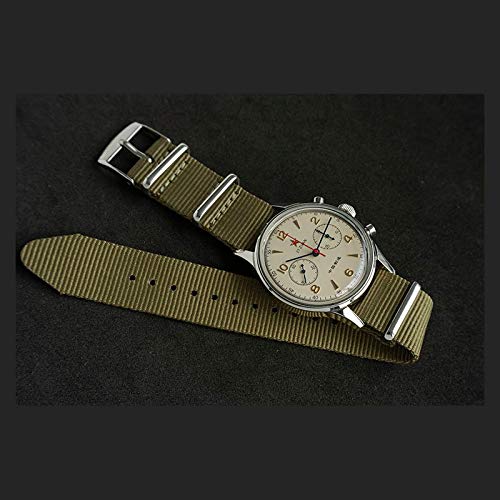
| crystal | sapphire |
| Movement | Mechanic with manual winding |
| Caliber | Seagull ST-19 |
| Power reserve | 45 hours |
| Housing diameter | 38 mm |
| Case thickness | 13 mm |
| material | Stainless steel body and nylon strap |
| waterproof | 3 ATMs (30 meters) |
➤ East amphibians
In 1967, two Russian engineers were commissioned to make a cheap and reliable diving watch 200 meters underwater. The result of their study is East Amphibian.
A Russian watch that has arrived with little change so far, including an automatic mechanical movement that produces ticks.
The best part is that it is still cheap, reliable and easily available anywhere in the world.
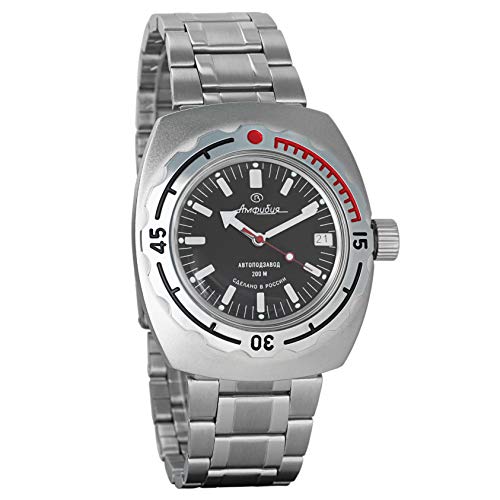
- See from the official supplier of the Ministry of Defense of the Soviet Union.
- Water resistance up to 200 meters. Hands and indicator lights.
- Vostok 2416 handmade with 31 pieces of jewelry. When fully wound, it will work for at least 36 hours.
- Impact resistant, second central arm, graduated frame.
- Approximate dimensions: 48 x 41 x 15 mm. Lead size: 22 mm. Weight: 122g.
➤ Orient Bambino
Orient is a Japanese brand that stands out, especially with its mechanical design, reliability and overall at a very reasonable price.
A good example of this is the famous Orient Bambino. A classic touch watch, its automatic mechanism incorporates the latest improvements in the field.
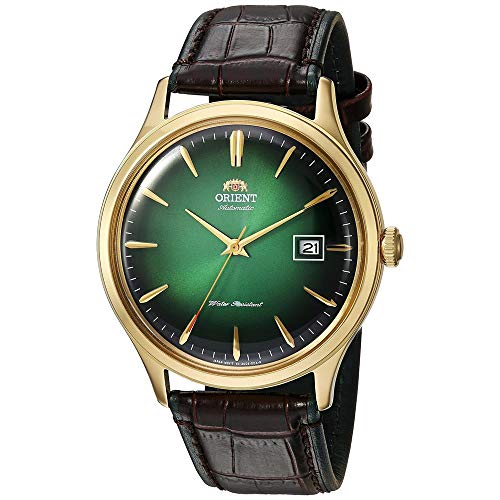
| crystal | mineral |
| Movement | Japanese automatic |
| Caliber | Orient F6724 |
| Power reserve | 40 hours |
| Housing diameter | 42 mm |
| Case thickness | 12 mm |
| material | Stainless steel case and leather strap |
| waterproof | 3 ATMs (30 meters) |
Time Seiko Presage cocktail time
Another Japanese brand that produces mechanical models with excellent value for money is Seiko, some of which are as impressive as the Presage Cocktail Time series.
Obviously, the Cocktail Times is an elegant watch, but some come with various complications, such as a power reserve indicator, and also integrate a well-designed automatic mechanical movement.
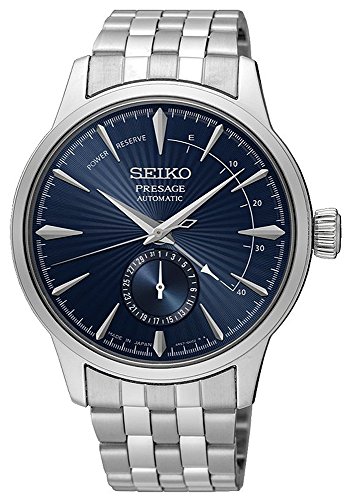
- Caliber 4r57 jewelry movement, 29,21,600 vibrations per hour, made in Japan
- Reluctance 4,800 a / m
- Power reserve: Approximately 41 hours
- Used hacking mechanism
- Hardlex glass box.
➤ Hamilton Khaki
Hamilton is a well-known Swiss brand and despite its fame, there are several affordable mechanical models.
One of these designs is the Hamilton Khaki, an extremely durable military watch with a sapphire crystal and automatic mechanical movement that perro store up to 80 hours of energy.
If you add a very reasonable price to this, it's not hard to see why this is one of the company's most successful models.
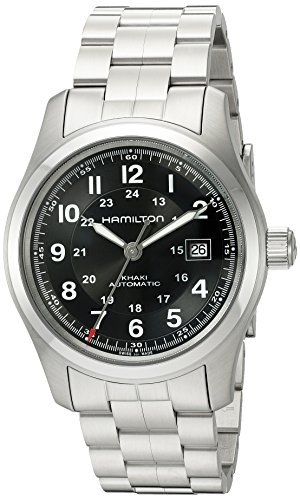
| crystal | sapphire |
| Movement | Swiss automatic |
| Caliber | Hamilton H-10 |
| Power reserve | 80 hours |
| Housing diameter | 40 mm |
| Case thickness | 11 mm |
| material | Stainless steel |
| waterproof | Ten ATM (100 meters) |
Is Tissot Visodate
As for the Swiss brands that carry their products to the tables, Tissot and its legendary Visodate model cannot be left out.
Tissot Visodate stands out with its Swiss automatic mechanism and sapphire crystal, but above all it is one of the most affordable mechanical models of the brand.
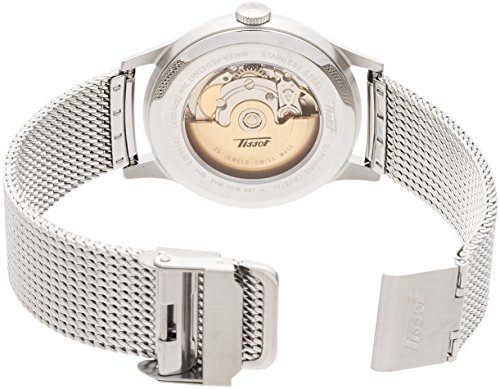
| crystal | sapphire |
| Movement | Swiss automatic |
| Caliber | ETA 2836-2 |
| Power reserve | 40 hours |
| Housing diameter | 40 mm |
| Case thickness | 12 mm |
| material | Stainless steel case and leather strap |
| waterproof | 3 ATMs (30 meters) |
Watches.Wiki participates in Amazon's EU affiliate program, an advertising program. For affiliates designed to provide websites with a way to earn advertising fees through advertising and including backlinks to Amazon.com
As an Amazon affiliate, we make money from partner purchases that meet applicable requirements. More information.
Last updated backlinks and images for 2021-08-13.
